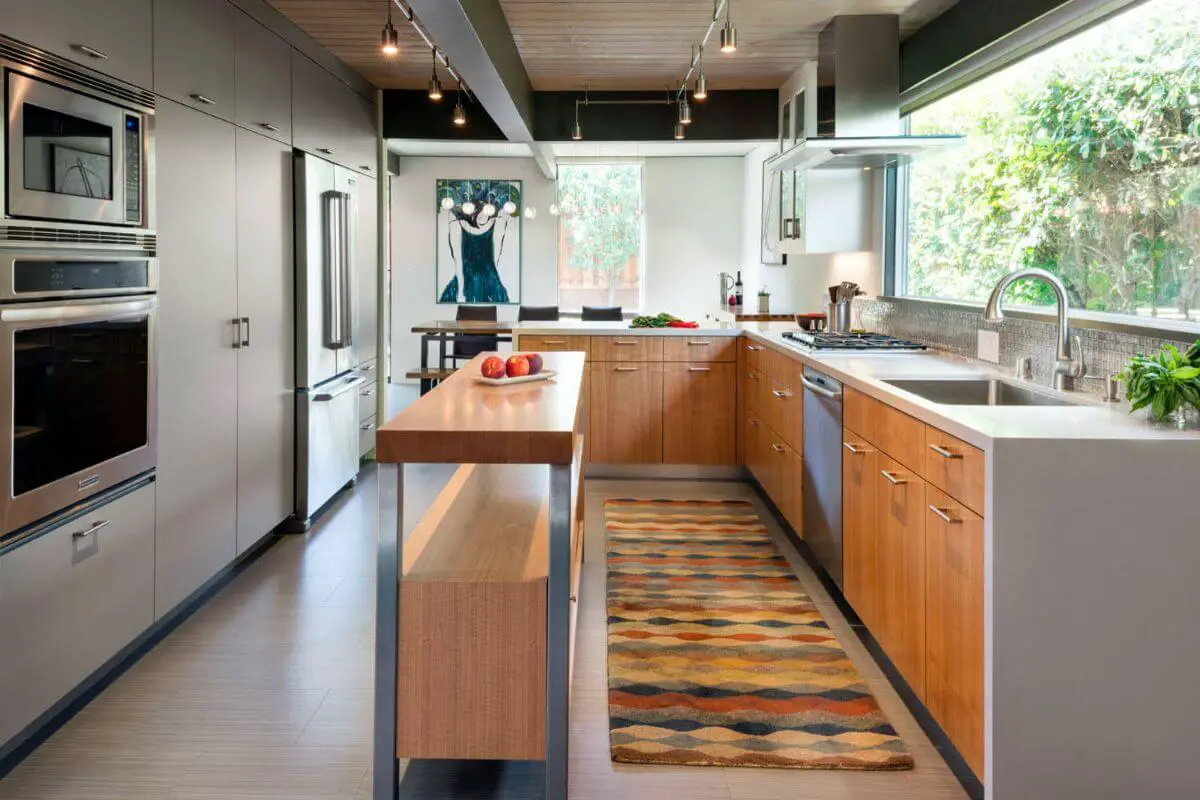Renovating your kitchen is a major project that can breathe new life into your home, enhance functionality, and increase its value. However, when it comes to a kitchen remodel, one of the first decisions you’ll face is whether to embark on a do-it-yourself (DIY) journey or hire a professional contractor. In this comprehensive guide, we’ll explore the pros and cons of both approaches, helping you make an informed decision that aligns with your budget, skills, and vision for the heart of your home.
DIY Kitchen Remodel
Undertaking a do-it-yourself (DIY) kitchen remodel is an exciting journey that allows you to transform your kitchen space while adding your personal touch. This guide provides a comprehensive overview of how to embark on a DIY kitchen remodel successfully, highlighting key steps and considerations to ensure a successful project.
Step 1: Planning and Inspiration
Pros:
- Cost Savings: DIY projects often come with cost savings as you eliminate labor costs associated with hiring professionals.
- Creative Control: You have complete creative control, allowing you to design your dream kitchen exactly as you envision it.
- Learning Experience: A DIY kitchen remodel is a fantastic opportunity to learn new skills and gain valuable experience.
- Flexible Schedule: You can work on your project at your own pace, fitting it into your schedule as time permits.
- Cost Savings: One of the most significant advantages of a DIY kitchen remodel is the potential for cost savings. You can save on labor costs, as you won’t be hiring contractors. This can be especially appealing for budget-conscious homeowners.
Cons:
- Skill and Knowledge Requirements: DIY kitchen remodeling requires various skills, including carpentry, plumbing, and electrical work. Lack of expertise can lead to costly mistakes and safety hazards.
- Time-Consuming: DIY projects often take longer to complete, as you balance your renovation work with daily responsibilities.
- Quality Assurance: The quality of work can vary, especially if you lack experience in construction and remodeling. This may affect the longevity and functionality of your kitchen.
- Potential Stress: The complexity of a kitchen remodel can lead to stress and frustration, especially if unexpected issues arise.
Step 2: Budgeting
Before diving into your DIY kitchen remodel, it’s essential to establish a budget. Determine how much you can afford to spend and allocate funds to various aspects of the project, including materials, appliances, and fixtures. It’s crucial to leave some room in your budget for unexpected expenses that may arise during the renovation.

Step 3: Design and Layout
Consider the design and layout of your new kitchen carefully. Create a detailed plan, including the placement of cabinets, appliances, and any structural changes. This plan will serve as your roadmap throughout the project, ensuring that you stay on track and achieve your desired result.
Step 4: Gathering Materials and Tools
Once your design is in place, start gathering the materials and tools you’ll need for your DIY kitchen remodel. This may include cabinets, countertops, flooring, lighting fixtures, plumbing materials, and electrical supplies. Ensure you have all the necessary tools, such as saws, drills, and screwdrivers, to facilitate the renovation.
Step 5: Demolition and Removal
Before you can begin building your dream kitchen, you’ll likely need to tear down the existing elements. This includes removing old cabinets, countertops, and appliances. Be cautious during this step, as you want to preserve the integrity of your kitchen’s structure.
Step 6: Installation and Assembly
As you progress through your DIY kitchen remodel, begin installing and assembling the new components. This includes cabinets, countertops, sinks, faucets, and appliances. Ensure that everything is level and secure to avoid future issues.
Step 7: Plumbing and Electrical Work
If your remodel involves changes to plumbing or electrical systems, this is the time to address those aspects. Be cautious and follow safety guidelines when working with these systems, and consider consulting professionals if necessary.
Step 8: Flooring and Finishing Touches
Install the chosen flooring material and add finishing touches to complete your kitchen remodel. This may involve painting, adding backsplashes, installing lighting fixtures, and ensuring all components are properly connected.
Step 9: Inspection and Cleanup
Before celebrating your newly remodeled kitchen, it’s crucial to conduct a thorough inspection to ensure everything is in working order and up to code. Once your kitchen passes inspection, clean up the construction debris, dust, and any remaining mess.
Step 10: Enjoy Your New Kitchen
With the project complete, it’s time to enjoy your new kitchen. Invite friends and family over for a celebratory meal and revel in the satisfaction of having successfully completed a DIY kitchen remodel.
In conclusion, a DIY kitchen remodel can be a rewarding and cost-effective way to achieve the kitchen of your dreams. While it requires time, effort, and skill, the sense of accomplishment and the personalized touch you add to your kitchen make it a project well worth considering.
Contractor-Led Kitchen Remodel
A contractor-led kitchen remodel is an excellent option for homeowners looking for a hassle-free and professionally executed transformation of their kitchen space. This guide provides a comprehensive overview of how to navigate a contractor-led kitchen remodel successfully, highlighting the key steps and considerations to ensure a seamless and stress-free project.
Step 1: Define Your Vision and Needs
Pros:
- Professional Expertise: Contractors bring years of experience and expertise to your project, ensuring quality work and safety.
- Time Efficiency: Hiring a contractor typically results in a faster completion time, minimizing the inconvenience of a non-functional kitchen.
- Stress Reduction: Professionals manage the project, allowing you to focus on other aspects of your life without the stress of a DIY renovation.
- Quality Assurance: Contractors are accountable for the quality of their work and often provide warranties on their services and products.
Cons:
- Higher Costs: Hiring a contractor comes with labor costs, which can significantly increase the overall expense of your kitchen remodel.
- Less Control: While contractors seek your input, you may have less creative control compared to a DIY project.
- Trusting a Third Party: You’re entrusting your project to a contractor, and it’s essential to choose a reputable professional to ensure your vision is realized.
- Scheduling: Your project timeline may be influenced by the contractor’s schedule and availability.
Step 2: Budgeting and Planning
Once you’ve defined your vision and needs, it’s essential to establish a budget for your contractor-led kitchen remodel. Discuss your budget with potential contractors to ensure that your project aligns with your financial constraints.
Step 3: Contractor Selection
Choose a reputable and qualified contractor to lead your kitchen remodel. Consider factors such as their experience, portfolio, references, and reviews. Ensure that the contractor is licensed, insured, and has a track record of delivering high-quality work.
Step 4: Design Collaboration
Work closely with your chosen contractor to collaborate on the design and layout of your new kitchen. Communicate your preferences, style, and specific needs to ensure the design aligns with your vision.
Step 5: Material Selection
With the help of your contractor, select the materials, appliances, and fixtures that will be used in your kitchen remodel. Your contractor can offer valuable insights into the best options based on your budget and style.
Step 6: Permitting and Documentation
Your contractor will assist you in obtaining any necessary permits and documentation required for the kitchen remodel. This ensures that your project complies with local building codes and regulations.
Step 7: Construction and Project Management
Once all preparations are in place, the contractor will start the construction phase of your kitchen remodel. They will manage the project, overseeing all aspects of the work, coordinating subcontractors, and ensuring quality and safety.
Step 8: Quality Control and Inspections
Throughout the construction process, your contractor will implement quality control measures to ensure that the work meets your expectations. Inspections may be conducted to ensure compliance with local regulations.
Step 9: Final Touches and Cleanup
As the project nears completion, your contractor will add the final touches, such as paint, lighting fixtures, and trim. They will also manage the cleanup process, ensuring that your new kitchen is spotless and ready for use.
Step 10: Project Completion and Enjoyment
With the project complete, your contractor will conduct a final walkthrough to ensure everything meets your satisfaction. Once you’re content with the results, you can begin enjoying your newly remodeled kitchen, relishing the convenience and beauty of your dream space.
In conclusion, a contractor-led kitchen remodel offers a professionally executed and efficient way to transform your kitchen. While it may come with a higher cost, the peace of mind and expertise that contractors provide can make it a worthwhile investment. By selecting a reputable contractor and actively collaborating on the design, you can achieve the kitchen of your dreams with confidence.
Making the Right Choice
Deciding between a DIY kitchen remodel and a contractor-led project is a pivotal choice that significantly impacts your kitchen’s outcome. In this guide, we’ll help you navigate this decision by highlighting key factors to consider when making the right choice for your kitchen transformation.
Kitchen Style and Complexity
- DIY: If your kitchen remodel involves basic changes, such as painting, replacing hardware, or minor cosmetic updates, a DIY approach is suitable. For complex redesigns and structural alterations, a professional contractor is often necessary.
- Contractor-Led: Contractors are equipped to handle intricate kitchen remodels that involve structural changes, such as removing walls or reconfiguring layouts. They bring professional expertise to manage complexity.
Budget Considerations
- DIY: DIY projects can lead to cost savings on labor, making them an attractive choice for those with budget constraints. However, keep in mind that errors can be costly, so a clear budget is essential.
- Contractor-Led: Hiring a contractor often comes with higher labor costs, but it can result in a more efficient and professionally executed project. A contractor can also help you manage your budget effectively.
Time and Convenience
- DIY: DIY projects are flexible but can be time-consuming, especially if you have limited experience. Be prepared for a longer timeline, which could affect your daily life.
- Contractor-Led: Contractors can complete a kitchen remodel more efficiently, minimizing disruptions to your daily routine. If convenience and speed are a priority, a contractor is a solid choice.
Creative Control
- DIY: DIY provides complete creative control. You decide every detail, from the design to the materials used. This approach allows you to personalize your kitchen precisely.
- Contractor-Led: While contractors seek your input, you may have less creative control. However, professionals can offer valuable design guidance and execute your vision effectively.
Skills and Expertise
- DIY: DIY kitchen remodels require a range of skills, from carpentry to plumbing and electrical work. If you possess these skills or are willing to learn, DIY can be a rewarding option.
- Contractor-Led: Contractors bring professional expertise to your project, ensuring quality work and adherence to safety standards. They can handle all technical aspects with ease.
Quality Assurance
- DIY: The quality of work in a DIY project can vary, and errors may impact the kitchen’s longevity and functionality.
- Contractor-Led: Contractors are accountable for the quality of their work and often provide warranties on their services and products, ensuring high-quality results.
Stress and Frustration
- DIY: The complexity of a kitchen remodel can lead to stress and frustration, particularly if unexpected issues arise during the project.
- Contractor-Led: Contractors manage the project, reducing stress and ensuring that everything proceeds smoothly.
Conclusion
The choice between a DIY kitchen remodel and a contractor-led project depends on your budget, skills, and preferences. For simpler projects with a lower budget, DIY can be rewarding. For complex remodels, time efficiency, and professional execution, a contractor-led approach is often the better choice. Regardless of your decision, a well-executed kitchen remodel can transform your home into a more functional and aesthetically pleasing space.
FAQs
1. What is a DIY kitchen remodel?
- A DIY (Do-It-Yourself) kitchen remodel is a project in which homeowners take on the tasks of planning, designing, and executing the renovation themselves. It typically involves hands-on work, such as demolition, installation, and finishing.
2. What are the benefits of a DIY kitchen remodel?
- DIY kitchen remodels offer cost savings, creative control, and the opportunity to learn new skills. They also allow for a flexible schedule and a personalized touch.
3. What are the drawbacks of a DIY kitchen remodel?
- DIY projects require various skills and can be time-consuming. Quality assurance may be a concern, and unexpected issues can lead to stress.
4. What is a contractor-led kitchen remodel?
- A contractor-led kitchen remodel is a project where a professional contractor or remodeling company is hired to plan, manage, and execute the renovation. The homeowners provide input and oversee the project while leaving the technical work to the contractor.
5. What are the advantages of a contractor-led kitchen remodel?
- Contractor-led remodels offer professional expertise, time efficiency, and reduced stress. They often come with quality assurance and warranties on work and products.
6. What are the disadvantages of a contractor-led kitchen remodel?
- Hiring a contractor can lead to higher labor costs, potentially limiting creative control. Scheduling may also be influenced by the contractor’s availability.
7. How do I determine which approach is best for my kitchen remodel?
- Consider factors like your kitchen’s complexity, budget, available time, skills, and desired level of control. A DIY remodel may be suitable for smaller projects, while a contractor-led remodel is recommended for more extensive renovations.
8. Can I combine DIY and professional contractor work in one kitchen remodel?
- Yes, some homeowners choose a hybrid approach, where they handle certain aspects of the remodel themselves and hire professionals for specific tasks, such as plumbing or electrical work.
9. What should I look for when hiring a kitchen remodel contractor?
- When hiring a contractor, consider their experience, portfolio, references, reviews, licensing, insurance, and reputation. Choose a contractor who aligns with your vision and budget.
10. How can I ensure the success of my kitchen remodel, whether DIY or contractor-led?
- Proper planning, clear communication, and a well-defined budget are essential for a successful kitchen remodel. Ensure you have the necessary permits and documentation, and be prepared for unexpected challenges.
11. Can I change the layout of my kitchen during a remodel?
- Yes, during a kitchen remodel, it’s possible to change the layout by moving appliances, cabinets, or walls. However, major layout changes may require professional guidance to ensure structural integrity.
12. How long does a kitchen remodel typically take?
- The duration of a kitchen remodel varies depending on the project’s scope and complexity. A minor remodel may take a few weeks, while a major renovation can take several months.
13. What are some cost-saving tips for a kitchen remodel?
- To save on costs, consider refurbishing or painting existing cabinets, choosing cost-effective materials, and repurposing appliances or fixtures when possible. Comparing prices and getting multiple quotes can also lead to savings.
14. Is it possible to remodel a small kitchen to make it feel more spacious?
- Yes, a small kitchen can be remodeled to maximize space and create a more open feel. This can be achieved through layout optimization, light color schemes, and space-saving storage solutions.
15. What are some eco-friendly options for a kitchen remodel?
- Eco-friendly kitchen remodel options include using sustainable materials, energy-efficient appliances, and low-VOC (volatile organic compound) paints. Upcycling or repurposing old materials is also environmentally friendly.
16. Can I stay in my home during a kitchen remodel?
- It’s possible to stay in your home during a kitchen remodel, but it can be inconvenient due to construction dust and noise. Some homeowners choose to temporarily relocate or set up a makeshift kitchen in another part of the house.
17. What should I do to prepare for a kitchen remodel?
- Preparing for a kitchen remodel involves clearing out the existing kitchen, securing necessary permits, and creating a temporary cooking and dining area. You should also communicate your expectations with your contractor.
18. How do I handle unexpected issues that may arise during a kitchen remodel?
- Be prepared for unforeseen challenges during a kitchen remodel, and maintain open communication with your contractor. If issues arise, work with your contractor to find solutions that align with your budget and timeline.
19. What is the role of permits in a kitchen remodel?
- Permits are required for certain types of work during a kitchen remodel, especially if it involves structural changes, electrical, or plumbing. Permits ensure that the work complies with local building codes and safety standards.
20. How do I ensure the safety of my family and pets during a kitchen remodel?
- Safety measures during a kitchen remodel include cordoning off the construction area, keeping children and pets away from hazards, and following safety guidelines for tools and equipment. Communication with the contractor is vital to maintain a safe environment.



